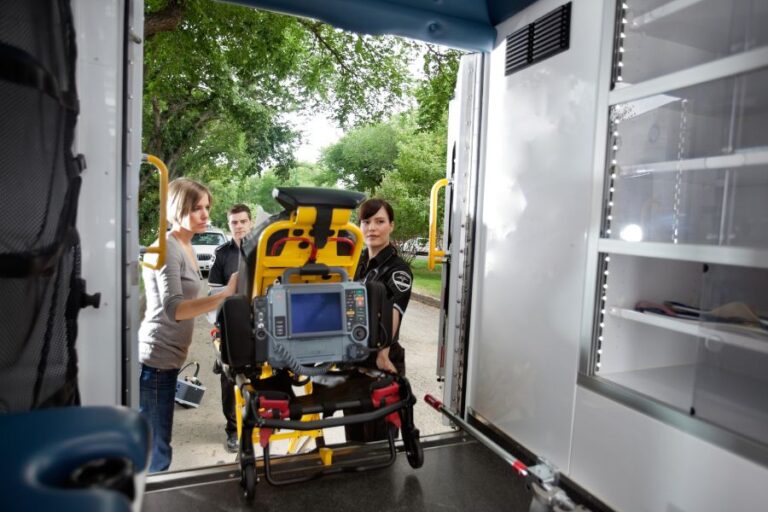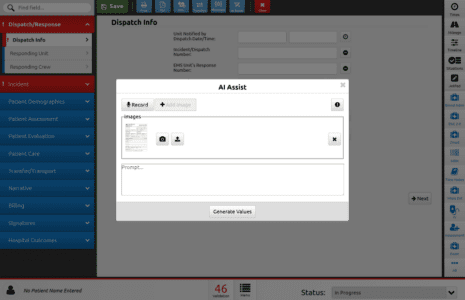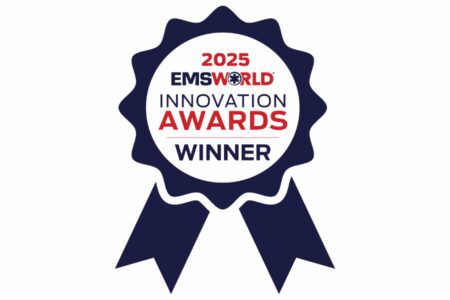Orange County Emergency Medical Services (OCEMS) has successfully implemented a bidirectional data exchange system that connects 21 hospitals and 14 EMS providers, resulting in an 83% success rate for electronic patient data sharing across the county. By using ImageTrend’s Health Information Hub (HIH), OCEMS created a framework for near real-time communication between EMS and hospital systems that improves care coordination, strengthens compliance, and supports better patient outcomes.
The project’s success has not gone unnoticed. It was recently honored with a statewide recognition for innovation in public health. But behind the scenes, this effort was powered by strategic partnerships, grant funding, and a commitment to solving one of EMS’s most persistent challenges: accessing meaningful, encounter-level outcome data.
Why OCEMS Took on This Challenge
OCEMS initially attempted bidirectional data exchange by partnering with a traditional Health Information Exchange (HIE). However, they quickly discovered that the HIE model wasn’t suited to the fast-paced, incident-driven nature of their EMS operations. While some traditional HIEs are built to provide longitudinal patient histories, EMS teams often need precise outcome data tied to a single transport.
Switching to ImageTrend’s Health Information Hub (HIH) allowed OCEMS to streamline the process. Instead of overwhelming crews with irrelevant data, HIH focuses on linking the EMS patient care report to the corresponding hospital encounter and returning only the outcomes that matter, thus enabling better analysis, education, and clinical improvement.
Connecting EMS and Hospitals in Real Time
OCEMS used ImageTrend’s Elite Field system, enhanced with barcode-scanning capabilities, to create a streamlined workflow for linking patient records between EMS and hospital EHRs.
When a patient arrives at a hospital, EMS crews scan a barcode from the hospital’s face sheet or wristband. This automatically pulls in the encounter number and medical record number, which serve as the key to matching prehospital and hospital records and triggering the bidirectional exchange.
Each participating hospital required slight configuration adjustments due to variations in EHR systems and wristband formats. OCEMS used barcode parsing within Elite to streamline the process, supporting Epic, Cerner, Sunrise, and Evident systems, and requiring testing and validation at each site.
Once connected, EMS agencies can push the electronic patient care report (ePCR) directly into the hospital’s medical record. Outcome data from the hospital is then sent back to the EMS provider, helping crews better understand the impact of their care in the field.
Turning Connection into Care: How OCEMS Reached 83% Exchange
Out of all 911 transports across Orange County, 83% now result in a successful bidirectional data exchange. This success spans 21 connected hospitals and 14 EMS providers using four different EHR systems, including Epic, Cerner, Sunrise, and Evident. With three more hospitals still in the onboarding phase, that number is expected to rise even higher.
While the technical setup was complex, the greater challenge was helping hospitals recognize the value of data sharing and building strong partnerships across organizations. Success required persistent collaboration, clear communication, and a shared commitment to improving outcomes.
Hospitals that participated gained faster access to EMS reports, supporting regulatory compliance and eliminating the need for manual data entry into internal hospital hubs. Those that delayed integration had to rely on time-consuming manual processes, often assigning staff to enter data by hand, an added burden that integration helped resolve.
A Framework for Success
While technical integration was important, OCEMS credits much of the project’s success to people. Their dedicated ImageTrend advisor played a critical role in guiding the integration process and helping hospitals and EMS providers navigate their unique workflows. Each hospital required tailored training materials and barcode configurations to accommodate their specific face sheets or wristbands.
This attention to detail paid off. Hospitals benefit from faster access to prehospital data, which supports compliance with regulatory bodies like The Joint Commission. EMS providers receive timely outcome data to support quality improvement initiatives.
Using Outcomes to Improve Care
OCEMS is now using ImageTrend Continuum™ to track key clinical indicators, such as how often crews correctly identify strokes and transport patients to the right facility. When outcomes align with field impressions, EMS providers receive direct feedback, reinforcing positive performance and enabling a data-driven culture of improvement.
Continuum dashboards also allow OCEMS to track broader trends and analyze areas for improvement. For instance, if a provider consistently identifies cardiac events accurately, that data can help inform training or validate protocols. This encounter-level insight is far more actionable than broad patient history data typically pulled through traditional HIE systems.
Lessons for Other Agencies
For EMS agencies considering a similar project, OCEMS offers this advice:
- Partnership is essential: Hospitals must see the mutual benefit of sharing data.
- Configuration is key: Every hospital system is different, so plan for individualized integration.
- Policy or incentives help: Regulatory requirements or financial support can accelerate adoption.
- Make it easy: Scanning barcodes instead of manual entry made it simple for crews in the field.
- Invest in the right people: A dedicated project lead on both the EMS and vendor side can make or break success.
Agencies without regulatory authority or grant funding can still move forward, but collaboration becomes even more important. OCEMS recommends starting with shared goals like reducing ambulance offload times or improving patient routing—priorities that bring EMS and hospitals to the same table.
Looking Ahead
With the initial grant now complete, OCEMS continues to fund the system through its operating budget and hospital agreements. The long-term goal is to fully validate the incoming outcome data and scale its use for regional clinical and operational improvements.
Orange County’s journey shows what’s possible when technology, leadership, and collaboration come together. Their work doesn’t just meet compliance, it’s creating a smarter, more connected healthcare system.
Connect with an ImageTrend expert to explore how bidirectional data exchange can strengthen your care coordination and quality improvement efforts.




